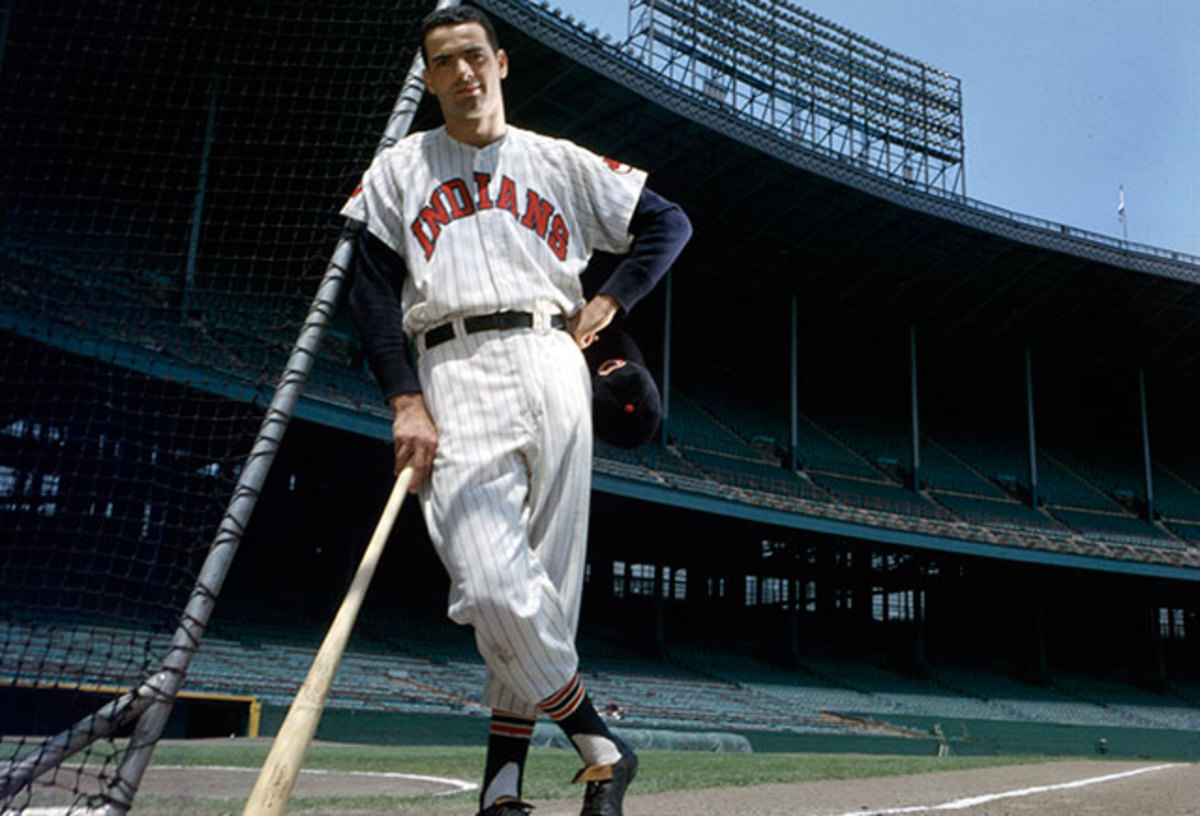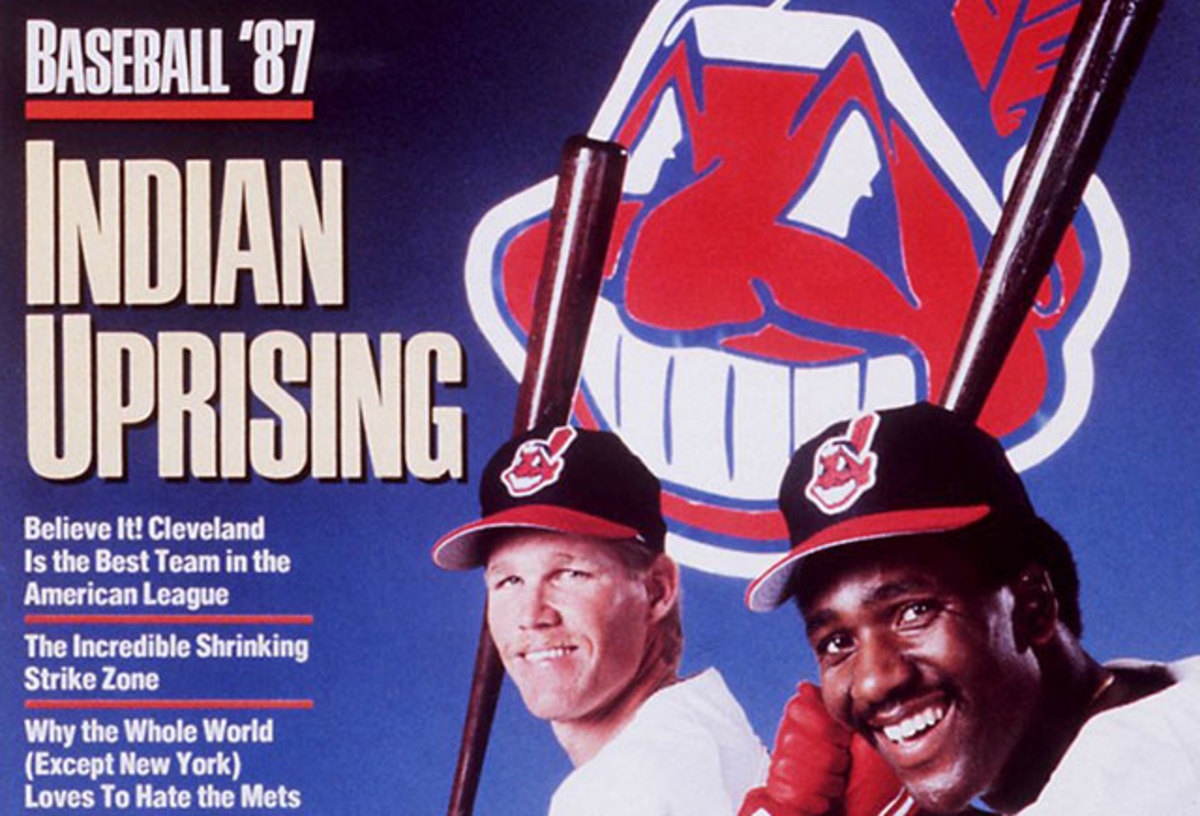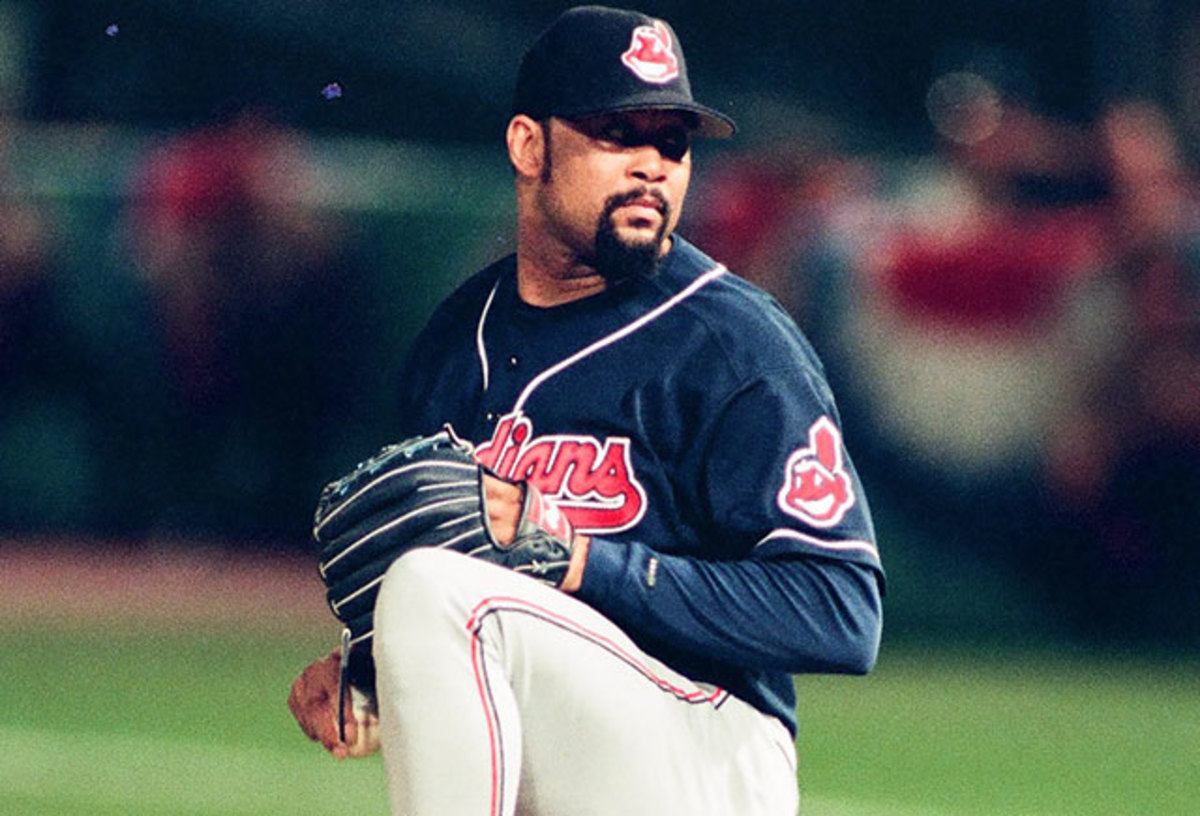The highs, lows and notable moments in Indians' 67-year title drought

While LeBron James and the Cavaliers pulled off an incredible upset of the Warriors to deliver Cleveland’s first championship in any major league sport since 1964, the Indians are on the outside looking in. They haven't won a World Series since 1948, the longest drought in the majors this side of the Cubs, who haven't won in 108 years.
The past 67 seasons haven't been all lowlights for the Indians, but they've certainly dealt with some crushing blows to go with their impressive highs. What follows here is a timeline of the most notable events in franchise history since that 1948 championship.
1949: Bill Veeck sells Indians
The maverick owner who purchased the team in 1946 left his stamp on the franchise in the short time that he owned it. In 1947, he moved the team into cavernous Cleveland Municipal Stadium, where they had played some games as far back as '32. Later that year, he kicked off the integration of the American League by signing Larry Doby; the next, he would add legendary Negro Leagues ace Satchel Paige. The team couldn't repeat its championship in 1949, and Veeck, going through a divorce with his first wife, was forced to sell the team for $2.2 million to fund the settlement.
1954: Indians win AL pennant
Led by Doby, AL batting champion Bobby Avila and a pitching staff featuring future Hall of Famers Early Wynn, Bob Lemon, Bob Feller and Hal Newhouser (the last in a relief role), the Indians set an AL record with 111 wins, surpassing the 1927 Yankees juggernaut by one. Alas, they were swept in the World Series by the Giants, with Willie Mays's over-the-shoulder catch of Vic Wertz's deep fly ball in the opener providing one of the most indelible moments in Series history.
1957: Herb Score hit by line drive
In 1955, Score, a fireballing 22-year-old lefty, went 16–10 with a 2.85 ERA and an AL-high 245 strikeouts, earning All-Star and AL Rookie of the Year honors. He improved upon that the next year by going 20–9 with a 2.53 ERA and 263 strikeouts, again tops in the league. Alas, on May 7, 1957, Score’s career took a turn for the worse when he was struck in the right eye by a line drive off the bat of the Yankees' Gil McDougald. Though he eventually recovered his vision, he was never the same pitcher, winning just 17 games over the next five seasons, though he remained identified with the franchise via 34 seasons (1964–97) as a broadcaster.
• Picking best World Series matchups from this year's interleague slate

1960: Indians trade Rocky Colavito
After debuting in September 1955, Colavito, a slugging rightfielder, clubbed 129 homers over the next four seasons, including an AL-high 42 in 1959 and four in one game on June 10 of that season. On April 17, 1960, GM Frank "Trader" Lane dealt the popular thumper to the rival Tigers for 1959 AL batting champion Harvey Kuenn. Colavito continued to mash in Detroit and would be reacquired in 1965, albeit for pitcher Tommy John (who would go on add another 286 wins to his two as an Indian) and outfielder Tommy Agee (who would star on the championship-winning 1969 Mets). Kuenn was a bust in his lone year in Cleveland, and the trade became a symbol of the Indians' ongoing futility, immortalized in 1994 via sportswriter Terry Pluto’s book, The Curse of Rocky Colavito.
1974: 10-Cent Beer Night Riot
As of June 1974, the Indians' sixth straight losing season wasn't yet a foregone conclusion, and the team's front office was doing what it could to bring more fans into Municipal Stadium. On the night of June 4, with the team facing Billy Martin's Rangers—with whom the Indians had brawled six days earlier—a promotion offering 10 ounces of Stroh's beer for 10 cents went predictably awry, complete with male and female flashers, streakers and mooners. As the Indians mounted a potential ninth-inning rally, fans threw golf balls, rocks and batteries at the Rangers and began swarming into the outfield, where they surrounded Texas rightfielder Jeff Burroughs. The umpires ruled the game a forfeit in the Rangers' favor, one of just five in MLB since 1954.
1975: Frank Robinson becomes first black manager in major league history
Twenty-seven years after Jackie Robinson broke the color barrier and three years after he decried the majors' lack of progress in producing a black manager, Robinson—a 38-year-old two-time MVP who had been acquired from the Angels in mid-September—was named player-manager of the Indians. On April 8, 1975, Robinson made history by debuting in his new role, writing himself into the lineup as the DH and No. 2 hitter, and homering off the Yankees' Doc Medich en route to a 5–3 win. The Indians went 79–80 that year and 81–78 the following year, finishing fourth in the AL East both times, but Robinson got the axe in June 1977 when they stumbled to a 26–31 start.
• Verducci: Home runs and offense are back, but is that good for MLB?
1981: Len Barker throws a perfect game, represents Indians in All-Star Game
On May 15, 1981, Barker—a 25-year-old righty who had been acquired from the Rangers in October 1978—spun the 10th perfect game in major league history and the second in franchise history (after Addie Joss's 1908 gem), blanking the Blue Jays on 103 pitches with 11 strikeouts. With the temperature in the mid-40s, just 7,290 fans attended the game, but Barker heated things up with his 96-mph fastball. Said his 92-year-old grandmother after the game, "I'm very proud of him. I hope he does better the next time."
On Aug. 9 of that season, Barker and battery mate Bo Diaz played for the AL in the All-Star Game, which was held at Municipal Stadium in front of 72,086 fans and marked the end of the seven-week players' strike.

1987: The Sports Illustrated Cover Jinx
After jumping from 60 wins in 1985 to 84 in '86, the Indians' core of players in their prime—Brett Butler, Joe Carter, Julio Franco, Mel Hall, Brook Jacoby and Cory Snyder—enticed the SI staff to pick them for the cover of the magazine's baseball preview. Headlined "Indian Uprising," the cover featured Snyder and Carter and anointed the team as the AL's best. Score that an error: After leading the AL in scoring in 1986, the offense sank to 12th in the league in '87, and the pitching, already shaky the year before, allowed a league-worst 5.91 runs per game as the team went 61–101.
1989: Major League hits theaters
Like the Indians, the baseball movie genre has had its ups and downs over the years, but Major League became a box office smash and a pop culture touchstone, with a plot centered around owner Rachel Phelps's plans to move the poor-drawing Indians to Miami. Spoiler alert: The plan is thwarted when a ragtag bunch of ballplayers winds up beating the Yankees in a one-game playoff to win the division title. The movie (which eventually spawned two sequels) starred Tom Berenger as catcher Jake Taylor, Corbin Bernsen as third baseman Roger Dorn, Wesley Snipes as centerfielder Willie Mays Hayes, Charlie Sheen as reliever Ricky "Wild Thing" Vaughn, Dennis Haysbert as rightfielder Pedro Cerrano, Bob Uecker as announcer Harry Doyle and Renee Russo as love interest Lynn Weslin, as well as former major leaguers Pete Vuckovich and Steve Yeager.
1994: Jacobs Field opens
The Indians' fortunes took a turn for the better when they escaped Municipal Stadium and moved into Jacobs Field, named for owners Richard and David Jacobs, who purchased the team in 1986. Thanks to a core of homegrown stars signed to club-friendly deals long before they reached free agency—the brainchild of general manager John Hart—the team embarked on its most competitive stretch in history, with six postseason appearances in seven years. Fans showed up to "The Jake" in droves, setting a record with a sellout streak of 455 straight games, from June 12, 1995 to April 4, 2001. Naming rights to the ballpark were sold to Progressive Insurance Company with a deal that took effect for the 2009 season.
• Red-hot Rangers rocket up Jonah Keri's power rankings
1995: Indians win AL pennant
With a modern-day Murderer's Row featuring Albert Belle (50 homers), Manny Ramirez (31 homers), Jim Thome and Paul Sorrento (25 apiece), Eddie Murray (21) and Carlos Baerga (15)—not to mention speedster Kenny Lofton and slick-fielding shortstop Omar Vizquel—the Indians went 100–44 in the strike-shortened 1995 season, making the playoffs for the first time in 41 years. They swept the Red Sox in the Division Series and outlasted the Mariners in a six-game ALCS before falling to the Braves in a six-game World Series.

1997: Another pennant, but a Game 7 World Series loss
While much of the lineup turned over in a two-year span—with Belle and Lofton departing (the latter would return) and David Justice, Matt Williams and Brian Giles joining—the 86-win Indians were the only team to finish above .500 in the AL Central. Thanks to Sandy Alomar Jr.'s ninth-inning home run off first-year closer Mariano Rivera in Game 4 of the Division Series, they downed the Yankees, beat the Orioles in a six-game ALCS, then took a one-run lead into the ninth inning of Game 7 of the World Series against the Marlins. Alas, closer Jose Mesa couldn't get the job done, surrendering the tying run. In the 11th, Craig Counsell reached base via an error by second baseman Tony Fernandez and came around to score the winning run via Edgar Renteria's single—the most agonizing loss in franchise history.
2007: 96 wins but an ALCS collapse
Led by Cy Young winner CC Sabathia, Roberto Hernandez (aka the pitcher formerly known as Fausto Carmona) and a lineup anchored by Victor Martinez, Grady Sizemore and Travis Hafner, the Indians won the AL Central and matched the Red Sox for the AL's highest win total. After downing the Yankees in the Division Series—thanks in part to the swarm of midges that engulfed rookie relief sensation Joba Chamberlain in Game 2—the Indians met the Red Sox in the ALCS and won three of the first four games. Unfortunately, they were outscored 30–5 over the next three games in one of MLB's great postseason comebacks.
2013: Terry Francona era begins
After losing more than 90 games twice in three seasons under manager Manny Acta, the Indians scored a coup by hiring Francona, who had won two championships in Boston but presided over the team's September 2011 collapse, then spent a year in the broadcast booth. Under Francona, the Indians climbed from 68 wins to 92, earning a wild-card berth, but they lost the wild-card game to the Rays, 4–0, failing to push a run across despite collecting nine hits.
2015: Jinx redux
Oops, we did it again. This time the Indians—represented by reigning Cy Young winner Corey Kluber and breakout star Michael Brantley—were just one of four regional covers of our magazine, though they were the staff pick to win the World Series. They couldn't live up to the hype, losing 19 of their first 29 games and finishing 81–80. Maybe 2016 will be their year.
